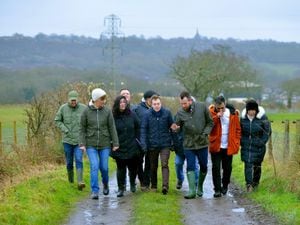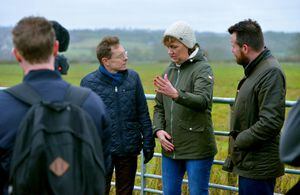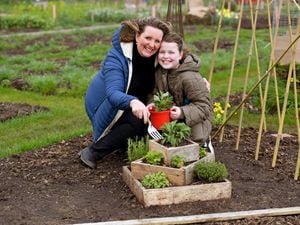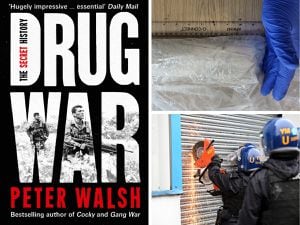Andy Street: My fight to keep vital green space
Read the latest column from West Midlands Mayor Andy Street.

We are once again preparing to enter an extended period of lockdown.
Local families will hang their hopes on Christmas, as they say a temporary farewell to each other. Cafes, pubs, restaurants, gyms and businesses of all kinds are preparing to close their doors as the nation tries to bring infection under control and protect the NHS.
As before, some sectors will carry on throughout lockdown – this time the NHS, supermarkets, manufacturers and public services will be joined by schools, colleges and universities as they keep the nation ticking over.
And of course the construction sites, at the heart of the strategy to Build Back Better, will work on. As we build the homes of tomorrow, huge opportunities lie ahead – but we must ensure sites like the Seven Cornfields are protected.
Last week the consultation ended on ‘Planning for the Future’ – proposed national reforms to modernise the planning process, encourage better design and sustainability, make developers contribute more to infrastructure, and ensure more land is available for development.
Behind this push for reform is the real need to build more housing.
In the West Midlands we have set the target of 215,000 new homes by 2031. When the pandemic struck, our rate of housebuilding had doubled in eight years to just under 17,000 last year.
Crucially, we have shifted the whole basis of housebuilding in the region in the last three years. Instead of tearing into the green belt, we have adopted a ‘brownfield first’ policy, cleaning up old derelict sites for development. The Black Country, thanks to its industrial heritage, has plenty of these brownfield sites – so many, in fact, that I believe we shouldn’t have to build on any green belt here until 2031.
So far, the policy has been a great success, with the vast majority of new homes built in our recent surge put up on reclaimed land. In Wolverhampton the first homes have gone on sale at Steelhouse Lane, while in Walsall sites like the old Caparo engineering works and the Harvestime Bakery have been given the green light to be used for new housing. In West Bromwich the biggest brownfield site development of all – Friar Park – will see a former sewage works, bigger than 30 football pitches, become a 750-home community.
We’ve done this thanks to Government backing for our business plan, with a £350m investment in our Housing Deal which was recently topped up with another £84m. A new science of land reclamation is being pioneered right here, with a £24m National Brownfield Institute planned for Wolverhampton.

So, my response to Government’s ‘Planning for the Future’ consultation is simple – let’s build on what we have been doing together so far.
However, there are aspects of the proposals which I fear go in the wrong direction.
First, the algorithm and methodology at is core tilts more homes on to councils with more green space, and away from those with more brownfield sites. This is, of course, to try and address the issue of housing where demand is high.
But, in this case, I believe it is tilting the playing field too far. It would mean, for example, increasing pressure on councils where we already have a Green Belt under intense pressure, whilst easing the need for homes elsewhere where there are more brownfield sites and a pressing need for regeneration.
We must not let developers ‘off the hook’ by allowing them to pile into greenfield sites and turn away from more challenging regeneration sites. For developers, these sites present a more lucrative and easier option. For the local community, they represent a loss of much-loved green space. Down the road, in neighbouring communities blighted by old derelict industrial sites, they represent a missed opportunity to reverse years of neglect.
Second, I believe this timely planning reform is a chance to seize the moment to provide additional protection to critically important green belt sites.
Across the Black Country at sites like the Seven Cornfields and Tack Farm in Halesowen, residents are battling to save cherished countryside.
Backlash
The new ‘Protected’ status should represent a strengthening of green belt protection for sites.
We should, for example, identify green belt sites where development is inconceivable – like Saltwells Nature Reserve in Dudley – and give them extra protection to deter frivolous planning applications, designed to test the resolve of councils under pressure to build.
And let’s recognise where some places have contributed some of their green belt land already to meet local and national need – like land for HS2 – and see if we can compensate them with more green belt protection in their area.
We aren’t ‘nimbys’ in the West Midlands.
But it is vital that the Government understands that if the cold data supplied by an algorithm offers up cherished green spaces to hungry developers, there will be a backlash from local communities.
We want and need more homes and we are working in partnership with Government, councils and developers to deliver them.
As we head indoors for a month of lockdown, many of us will miss the open spaces that surround our communities, where we walk our dogs, run for exercise and our children play.
We must build back better, but let’s never forget the critical importance of the green belt – indeed, let’s seize the opportunity to do more to defend it.





